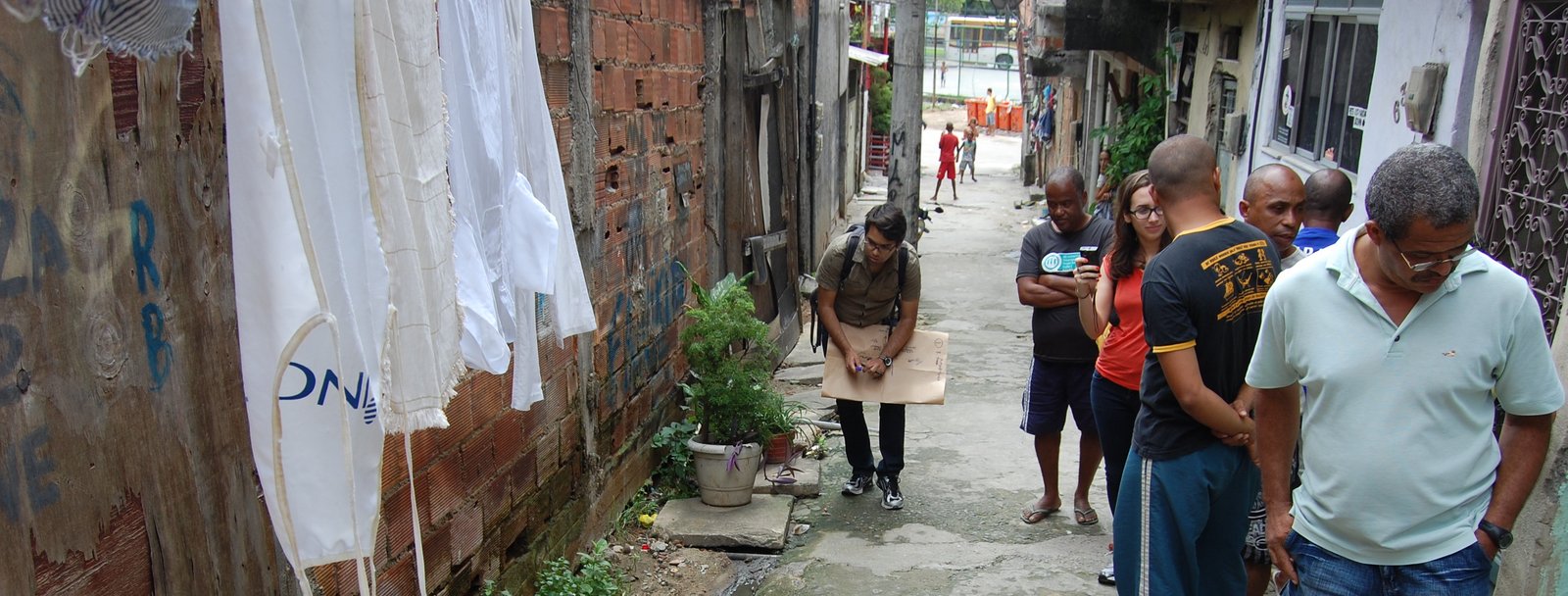Future Green Studio has teamed up with Pratt Institute PSPD graduate student Leonel Lima Ponce to facilitate and further Ponce’s research and development of a sustainable infrastructure project in favela Pica-Pau. Pica-Pau sits north of the polluted Iraja River. During storms the main street in the community is often flooded with sewage partially due to the combined sewer system. Pooling of sewage in the narrow alleys provides a breeding ground for diseases and what little fresh water there is, the community distrusts. Drastic changes in elevation in the northern part of the site creates “areas of risk” characterized by informal water and sewerage infrastructure, open sewers, and eroding hillsides. Leonel Ponce worked with NGO Catalytic Communities and the Pica Pau community to establish the critical areas on site, potential risks and possible solutions through a program of participatory workshops.
In late March, 2013, a transect walk of favela Pica-Pau was guided by a small group of residents. In it, a series of maps were drawn to document community perspectives of infrastructural deficits in real time, using universal iconography that could be easily understood by all. Gathered data was then charted in a matrix by infrastructure type and geographical zone, in order to understand community priorities. The walk induced interest from observing residents, who later had the opportunity to contribute to the discussion through a visioning workshop.
On Tuesday 21st May, FGS hosted a design charrette with Rupal Sanghvi from HealthXDesign and environmental engineers Eric Rothstein and Ian Lipsky from EDesign Dynamics alongside Leonel Lima Ponce to discuss some of the key health and infrastructural issues in the Pica-Pau community. Leonel Lima Ponce presented his previous work in participatory infrastructure planning, which generated some of the ideas for a more pointed future design workshop. FGS envisage this project as a great opportunity to take more agency in creating green infrastructure by facilitating a collaboration at the confluence of Science, design and policy


